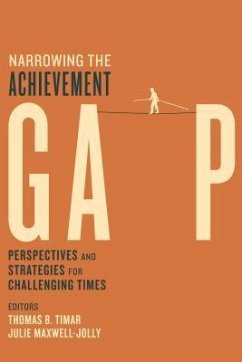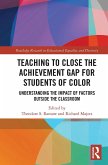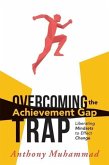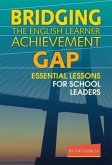Closing persistent gaps in educational outcomes between different groups of students has been a central goal of educational policy for the past forty years. The commitment to close existing achievement gaps poses an unprecedented challenge to policy makers, school leaders, and teachers alike, since the causes of those gaps are multiple and complex. For that reason, no single set of policy prescriptions--no matter how well crafted and managed--is likely to be successful. While there is no ready road map for policy makers, the press for solutions is acute. The chapters examine the conditions--both in and out of school--that lead to achievement gaps. However, this book also explores measures for addressing these gaps--measures that, individually and in concert, will prove crucial to any meaningful effort to alleviate these profound disparities. "School performance by black and Latino students has climbed markedly, by a full grade level, over the past two generations. Yet achievement disparities relative to whites have narrowed only slightly, perpetuating a grand canyon of a gap that divides America. This volume replays an instructive history--pinpointing what hasn't worked--and then carves a path forward to build schools that narrow disparities inside classrooms, showing how educators, families, and community activists are pulling together. Each chapter builds from hard evidence, not hopeful rhetoric. It's a must-read for those dedicated to uniting our society--an endeavor in which we all have a stake." -- Bruce Fuller, professor of education and public policy, University of California, Berkeley "An important book by wise authors who have learned the hard way that federal policies to address underachievement in education are failing. Although no one can offer a quick fix for America's educational problems, this incisive book offers promising and realistic measures for helping children who are poor and often racially and linguistically isolated. The authors provide a thoughtful set of alternatives to failed federal policies that have not and cannot address the pernicious achievement gaps that endanger our democracy." -- David C. Berliner, Regents' Professor Emeritus, Arizona State University "This book is essential reading for policy makers, researchers, and educators concerned with closing achievement gaps in American schools. It provides a novel examination of the issues and important, new directions for moving us forward." -- Amanda Datnow, professor of education, University of California, San Diego Thomas B. Timar is a professor and the executive director of the Center for Applied Policy in Education at the University of California, Davis, School of Education. Julie Maxell-Jolly is a senior researcher and the managing director of the Center for Applied Policy in Education at the University of California, Davis, School of Education.
Hinweis: Dieser Artikel kann nur an eine deutsche Lieferadresse ausgeliefert werden.
Hinweis: Dieser Artikel kann nur an eine deutsche Lieferadresse ausgeliefert werden.







